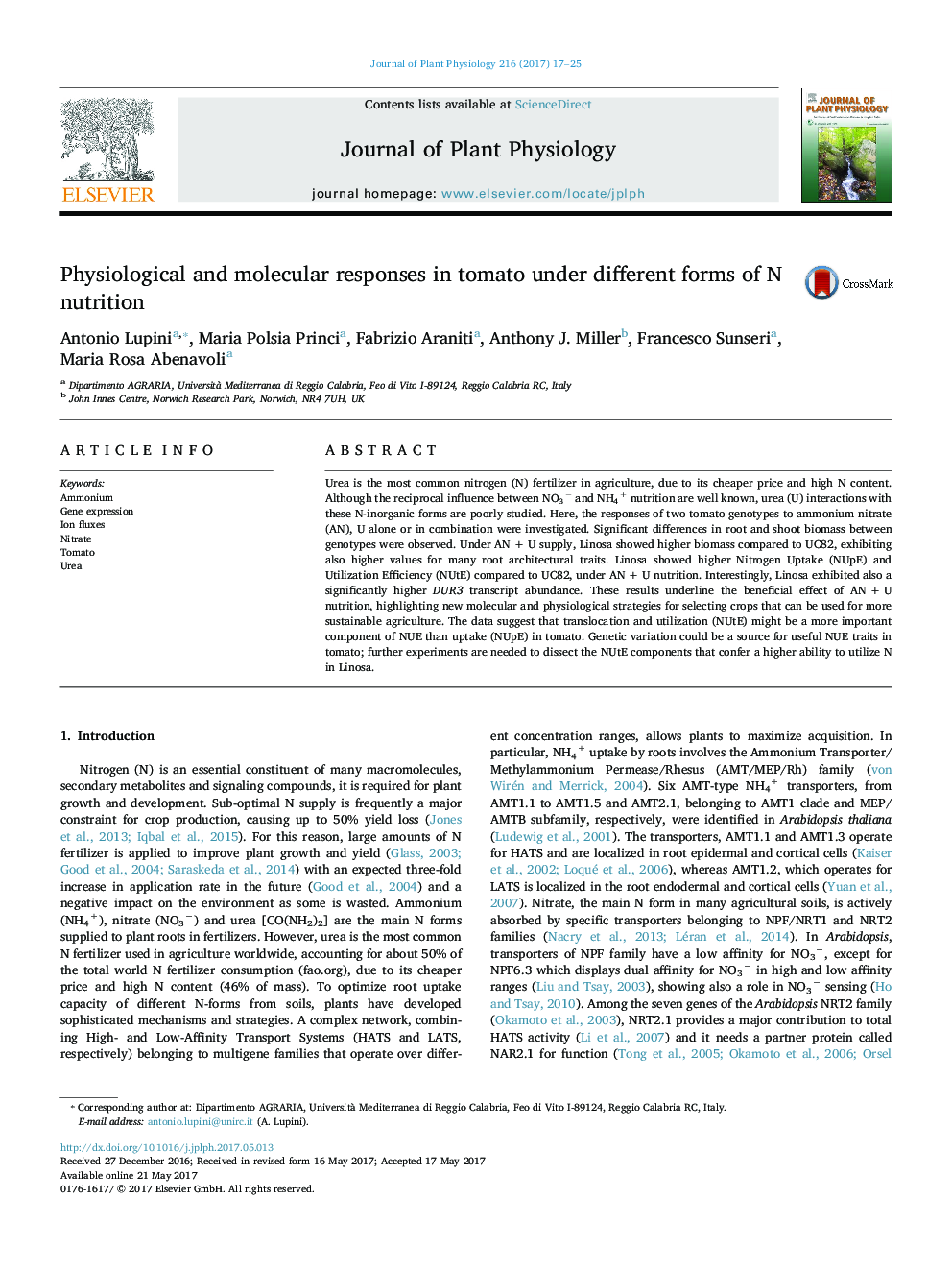| Article ID | Journal | Published Year | Pages | File Type |
|---|---|---|---|---|
| 5518018 | Journal of Plant Physiology | 2017 | 9 Pages |
Urea is the most common nitrogen (N) fertilizer in agriculture, due to its cheaper price and high N content. Although the reciprocal influence between NO3â and NH4+ nutrition are well known, urea (U) interactions with these N-inorganic forms are poorly studied. Here, the responses of two tomato genotypes to ammonium nitrate (AN), U alone or in combination were investigated. Significant differences in root and shoot biomass between genotypes were observed. Under ANÂ +Â U supply, Linosa showed higher biomass compared to UC82, exhibiting also higher values for many root architectural traits. Linosa showed higher Nitrogen Uptake (NUpE) and Utilization Efficiency (NUtE) compared to UC82, under ANÂ +Â U nutrition. Interestingly, Linosa exhibited also a significantly higher DUR3 transcript abundance. These results underline the beneficial effect of ANÂ +Â U nutrition, highlighting new molecular and physiological strategies for selecting crops that can be used for more sustainable agriculture. The data suggest that translocation and utilization (NUtE) might be a more important component of NUE than uptake (NUpE) in tomato. Genetic variation could be a source for useful NUE traits in tomato; further experiments are needed to dissect the NUtE components that confer a higher ability to utilize N in Linosa.
